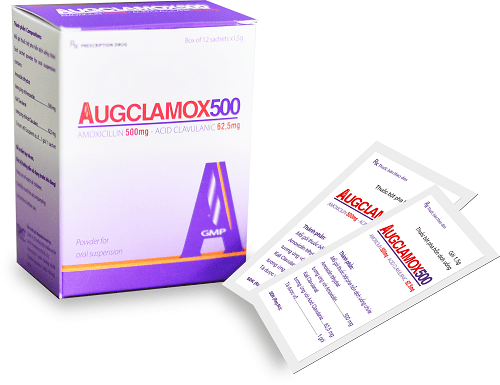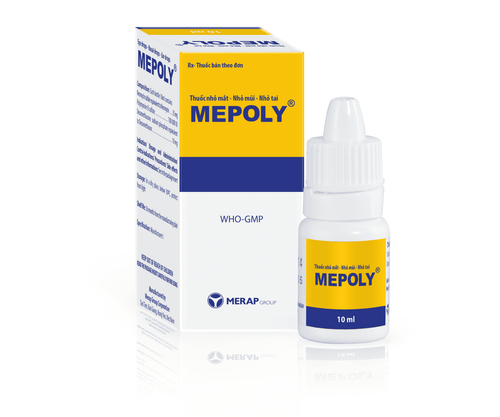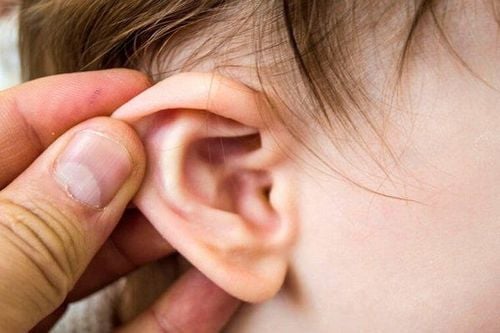This is an automatically translated article.
Opeatrop is an antibiotic that helps treat infections caused by bacteria. The following article will provide you with detailed information about the use of the drug as well as how to use Opeatrop correctly.1. Ingredients, dosage form
Opeatrop drug has the main ingredients:
Azithromycin: 250mg content. Other sufficient excipients. Opeatrop is available as a film-coated tablet.
2. Indications for taking Opeatrop
Opeatrop is indicated for use in cases of infections caused by bacteria sensitive to azithromycin such as:
Lower respiratory tract infections: Bronchitis, pneumonia. Skin and soft tissue infections. Inflammation of the middle ear. Upper respiratory tract infections: Sinusitis, pharyngitis and tonsillitis. Opeatrop should only be used in patients who are allergic to penicillin. In case of sexually transmitted infections such as: Uncomplicated genital tract infections caused by Chlamydia trachomatis, uncomplicated genital infections caused by non-multiresistant Neisseria gonorrhoeae, prevention of Mycobacterium avium - intracellulare (MAC) infections in patients with HIV-infected patients. Conjunctivitis caused by Chlamydia trachomatis. Uses:
The drug opeatrop has a strong bactericidal effect by binding to the ribosomes of pathogenic bacteria, preventing their protein synthesis. Currently, there is also cross-resistance with erythromycin, so when using Opeatrop drug should be carefully considered. Follow your doctor's instructions. Opeatrop should not be taken with meals because food affects the effect of the drug.
3. Dosage - How to take Opeatrop
Dosage is for reference only, the specific dose of the drug depends on the age and condition of the patient.
Dosage for adults:
Pharyngitis and tonsillitis: Dosage for the first day is: Take 2 tablets/time. The next dose until the fifth day is: Take 1 tablet / time / day. Acute sinusitis: Oral dose of 500mg/time/day for 3 days. Chronic Obstructive Pulmonary Disease with Superinfection: Single dose: 500mg/time/day for the first day, then 250mg/time/day from day 2 to 5. Community-acquired pneumonia. Mild to moderate severity: Single dose for the first day: 500mg orally once a day, then 250mg once a day from day 2 to 5. Genital ulcers caused by Haemophilus ducreyi , Urinary tract infections, cervicitis: Take a single dose of 1 gram/time. Dosage for children:
Opeatrop for children: First day: 10mg/kg body weight. From the second to the next fifth day: Take dose of 5mg/kg body weight x 01 time/day. How to use: The best way to take the drug should be according to the doctor's prescription. You should take the medicine at least 1 hour before meals or 2 hours after meals.
4. Contraindications to taking Opeatrop
In case the patient has an allergic reaction or hypersensitivity to Opeatrop or azithromycin, erythromycin or any antibiotic of the macrolide group, or to any of the excipients of the drug.5. Side effects when taking Opeatrop
In the course of taking Opeatrop you may experience undesirable effects:
Digestive disorders: Vomiting, belching, diarrhea, abdominal pain,.... Rash, allergic reaction. Headache . Reduced hearing. Anaphylaxis, angioedema. Decreased liver function. If you experience any unpleasant symptoms while taking Opeatrop, please inform your doctor immediately.
6. Interactions when taking Opeatrop
During the use of Opeatrop drugs, there may be interactions between this drug and other drugs or between the drug Opeatrop and food or other functional foods. This will affect the effect and effectiveness of the drug, so to avoid adverse interactions, patients should inform their doctor of all prescription and non-prescription medications before taking Opeatrop. .
Opeatrop is an antibiotic drug to treat infections caused by bacteria: Respiratory, urinary, genital, ... This is a prescription drug used as prescribed by the doctor, the patient is excellent. do not arbitrarily use the drug to avoid possible bad interactions or complications. If you have any questions regarding Opeatrop, please contact your doctor immediately for answers.













